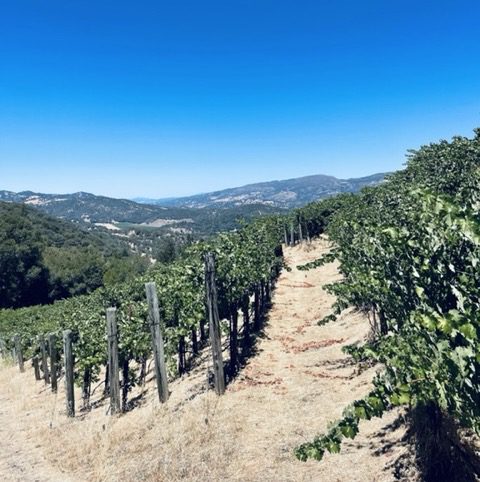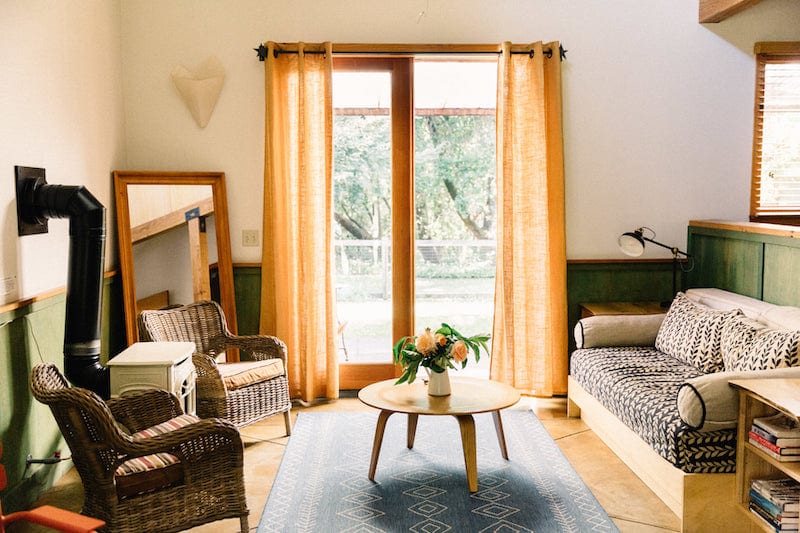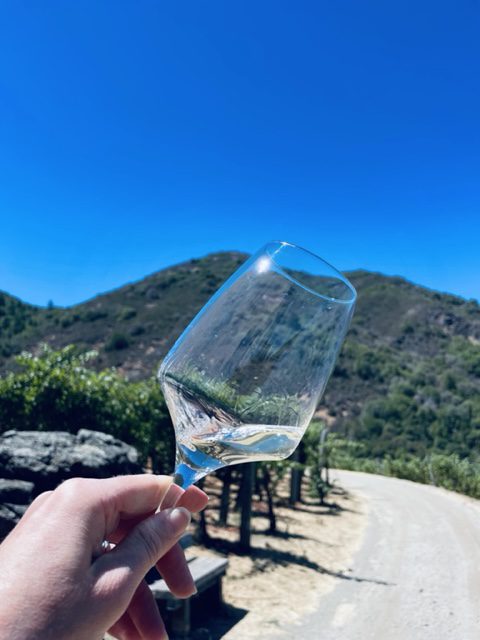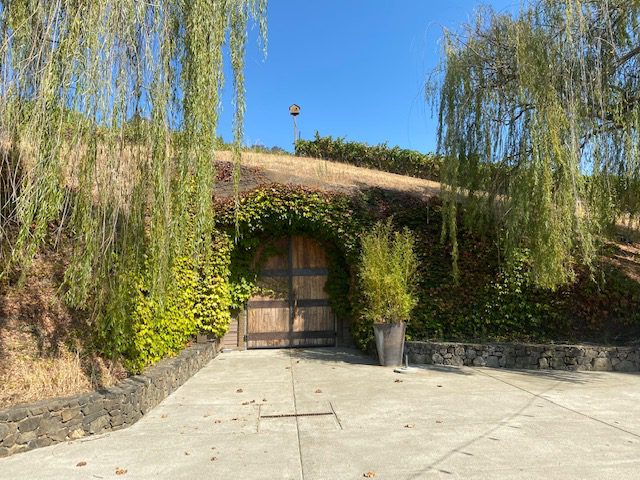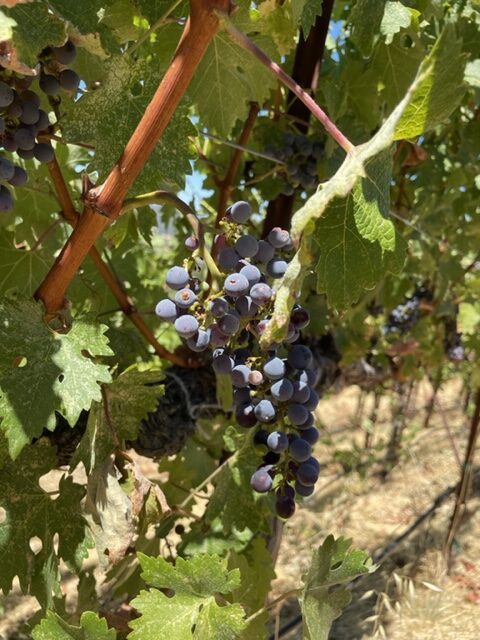Our Mendocino Wine Travel Guide shares a brief history of the wine region, terroir, where to sip, where to stay and things to do beyond the vines.
WHERE IS MENDOCINO WINE COUNTRY?
Mendocino County is north of Sonoma and west of Lake County; it is in fact the northernmost wine-producing region in California. A big part of its elusiveness is that it’s not easy to get to. It’s nearly a three-hour drive from San Francisco and the nearest airport – Sonoma County airport (STS) – is a two hour drive.
BEST TIMES TO VISIT
Mendocino County can get hella-hot (into the triple digits) in the summer, especially during the day. The best time to visit is during the shoulder seasons, from March-May, and September-November.
Mendocino is the Greenest Wine US Wine Region
When no one’s looking, how do you treat living things that can’t talk back? Doing the right thing is easy in front of an audience, but the way individuals and communities treat forests, streams, the birds and the bees when no one’s looking over their shoulder often speaks volumes about the state of their heart and soul.
Passing one of many “$1,000 fine for littering” warning signs along Highway 128, I was reminded once again of how much care the people and institutional powers that be in Mendocino County show to the land, and the interconnected ecosystems that thrive there.
California’s Mendocino County boasts the largest number of certified organic and biodynamic acres under vine in the entire nation, some of the deepest winemaking roots in the country and an evolving community of innovative young vintners pushing the boundaries of viticulture and winemaking as we know it. But visitors will also be able to experience stunning old-growth forests, off-the-beaten-path adventures on horses, trains and in spas, thoughtful farm-to-table food and terroir-driven cider and beer to boot.
It is also—especially when compared to some of its more southerly wine neighbors—incredibly affordable. For insight into Mendocino’s rich history and a detailed itinerary of can’t-miss wineries, restaurants and activities, read on (and here).
TERROIR
The diversity of the terrain in Mendocino has led to the creation of 12 distinct American Viticultural Areas (AVAs).
The county covers 3,878 square miles, about 2,500 square miles of which is live oak and redwood groves. Mendocino is north of Sonoma and west of Lake County; it is in fact the northernmost wine-producing region in California, with around 27 square miles (or 17,500 acres) devoted to wine-grape production.
While vineyards only comprise about 0.8% of the total County acreage, the culture of wine there has had an outsize impact on Mendocino’s profile on the world stage, and its ability to attract thirsty visitors.
The diversity of the terrain in Mendocino has led to the creation of 12 distinct American Viticultural Areas (AVAs): Anderson Valley (arguably, the region that made Mendocino world-famous), Cole Ranch (the smallest AVA in North America at less than one-quarter square mile), Covelo, Dos Rios, Eagle Peak, McDowell Valley, Mendocino Ridge (the only non-contiguous AVA in the U.S.), Mendocino, Pine Mountain-Cloverdale Peak (partially in Sonoma), Potter Valley, Redwood Valley and Yorkville Highlands.
There are 570 vineyards, and while there are behemoths like Bonterra, which has more than 1,000 acres of organic and biodynamic certified vineyards, most are decidedly small—about 14 acres on average.
TOP GRAPE VARIETIES
Red grapes dominate plantings, with Pinot Noir, Cabernet Sauvignon, Zinfandel, Merlot, Syrah, Petite Sirah, Carignan, Grenache, Sangiovese and Barbera showing particularly well. Chardonnay and Sauvignon Blanc are the most widely planted whites, but wines made from Mendocino’s Gewürtztraminer, Viognier, Riesling and Pinot Gris can also be exceptional. Inland regions (Potter, Redwood, Eagle) produce heartier, richer reds and whites, while coastal regions (Anderson, Mendocino Ridge, Cole Ranch) producer aromatic whites and earthier reds.
While Mendocino—especially the Anderson Valley appellation—has drawn increased acclaim from critics and wine lovers, it still doesn’t snag big bucks for its grapes. The average price per ton for grapes from Mendocino is about $1,755, whereas the average for Napa is almost $6,000.
Interestingly, Napa wineries that source from Mendocino are able to still sell their wines at premium prices. Mariah Vineyards, for example, which grows its grapes for its own line and clients, sells its bottles for between $20-$42. But its grapes go into bottles produced in more storied appellations, and sell for quadruple the price. (See: Mariah Vineyards Chardonnay sold by Napa’s Newton Vineyards for $135.)
While this dichotomy must be frustrating for the growers and vintners trying to raise the profile of the county’s terroir, it also must contribute to the underdog, counter-cultural spirit that makes Mendocino such an enchanting place to be. (It also, arguably, helps explain the incredibly affordable lodging, dining and activity prices). Every time I leave, I can’t wait to go back.
HISTORY
California’s Mendocino County boasts the largest number of certified organic and biodynamic acres under vine in the entire nation, some of the deepest winemaking roots in the country and an evolving community of innovative young vintners pushing the boundaries of viticulture and winemaking as we know it. But visitors will also be able to experience stunning old-growth forests, off-the-beaten-path adventures on horses, trains and in spas, thoughtful farm-to-table food and terroir-driven cider and beer to boot.
Before European settlers arrived in the mid-1800s, Pomo, Yuki and other indigenous people thrived off the rich array of game, fish (especially salmon), wild greens and mushrooms that flourished there.
Early settlers lived in far-flung communities in the mountainous landscape, tending their own gardens, establishing sheep and cattle ranches, fruit orchards and planting fields of potatoes and grains. Post 1950, farming patterns changed, and the number of sheep and cattle ranches and apple and pear farms declined, although drivers along Highways 128 and 101 will still find many thriving.
“Back to landers” flooded into Mendocino in the 1960s and 70s, and can be credited for preserving the region’s audacious, rugged land and spirit, and indeed, ushering in a new era of farming and cultivation that has helped ensure its economic prosperity for generations to come.
Farmers began introducing organic and biodynamic farming principles, launching an organic winemaking revolution that only now has truly become mainstream.
Frey Vineyards became the first organic and biodynamic winery in the entire country when it opened its doors in 1980. Bonterra Organic Estates, founded in 1990, produces more organic wine than anyone else in the U.S., and Parducci Wine Cellars became the first American wine to be certified carbon neutral in 2008.
In 2004, underlining the county’s dedication to sustainability, residents voted to ban genetically modified crops and animals. (The first region in the United States to do so.)
Planning Your Mendocino Wine Country Vacation
WHERE TO STAY
- The Boonville Hotel, Anderson Valley: Sophisticated simplicity rules the day at this boutique hotel, featuring 16 unique rooms. Rooms are unique, but sometimes include garden views, large soaking tubs, private outdoor bathtubs, balconies, small fridges, a private entrance and more. Prices start at $195.
- Indian Creek Inn, Anderson Valley If you’re traveling with a group, check out the 15-room Indian Creek Inn, clustered around five hubs, each of which have their own shared kitchen, sitting room, dining area and outdoor space. The Inn is set in the hills of the Anderson Valley, with views of forests, dramatic ridges and vineyards—and just a short drive from restaurants, wineries and activities. Prices start at $190.
- The Apple Farm, Anderson Valley: There are three independent guest cottages and a guest room (within the larger main building) located on The Apple Farm. Guests staying in the cottages will get to enjoy the experience of being in a completely rural setting, yet while also getting all of the creature comforts of a luxury hotel (beautiful decor, luxury bedding, etc.).
- Thatcher Hotel, Hopland: Sink into restored Victorian glory at the Thatcher Hotel. Built in 1890 by pioneer William Thatcher, it is brimming with new life thanks to the family behind Campovida and the Stock Farm, who reopened it in 2019. It features 18 spacious rooms, a curated library, farm-to-table café, backyard patio with cozy fire pits to enjoy a good conversation, dipping pool and grand bar featuring local wine, classic cocktails and local beer. Prices start around $250 a night.
- Stock Farm Inn, Hopland: Snag a comfortable room at the Stock Farm Inn. Each roomy suite comes with a small kitchen, enormous bathroom with a soaking tub, private balcony, and access to the back patio + pool.
- Inn at Newport Ranch, Fort Bragg: A luxurious inn along the coast.
- The Harbor House Inn, Elk: The Harbor House Inn features luxurious rooms and a two-star Michelin restaurant paired with views overlooking the Pacific.
- Little River Inn, Little River: Just south of the town of Mendocino, on Highway 1, this oceanfront hotel and resort has expansive views of the Pacific and an on-site restaurant and golf course.
MENDOCINO WINE TASTING ITINERARIES
CAN’T MISS MENDOCINO WINE FESTIVALS
- White Wine Weekend in Anderson Valley in February
- Hopland Passport in May
- Anderson Valley Pinot Noir Festival in May
- Taste Mendocino and Mendocino County Sparkling Wine Festival in August
- Taste of Hopland in September
BEYOND THE VINES
When it’s time to take a break from wine tasting, Mendocino wine country has plenty to keep the fun going. Here are a few favorites. Get more in the wine tasting itineraries noted early as they include ideas for things to do in Mendocino besides wine tasting.
Hendy Woods State Park
Right off of Highway 128, the majestic Hendy Woods await. The park protects two groves of towering redwoods, some of which rise above 300 feet and are more than 1,000 years old. There are five miles of trails, including the wheelchair-accessible Discovery Trail. You can also swim, canoe and kayak here. Look out for the Hendy Hermit, a Russian immigrant who has made the Park home for more than 20 years.
Ride the SKUNK
If you want a front row-seat to the majesty of the old-growth Redwood forest (the operative word being seat), hop on the Skunk Train. In operation since 1885, this train snakes through ancient groves, across pristine mountain waters, over wooden trestle bridges, through stone tunnels and scenic meadows. There are two 75-minute roots, one departing from Fort Bragg, the other from Willits. Both stop for and allow you to get out and explore.

